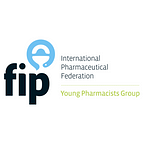By: Rafa Al Khalifa
“Planning is bringing the future into the present so that you can do something about it now.”- Alan Lakein. In 2020, FIP has planned and set its Development Goals (DGs) with the aim to transform the future of pharmacy practice. These 21 FIP DGs, far-sighted, aim to put the steps toward the bright future of the healthcare workforce and resources, practice, and systems as well as strategies and science. (1)
In this article, we are going to focus on the Middle East and North Africa (MENA) while discussing the FIP DG 18 that comprehensively reviews and studies the issue of access to quality healthcare systems and services. Healthcare Accessibility has five dimensions which are: Approachability; Acceptability; Availability and accommodation; Affordability; Appropriateness. (5) FIP DG 18 draws the roadmap of optimizing the accessibility systems by appropriate resource allocation, supply, training, and capacity building as well as collaboration and innovation. (1)
The World Bank has critically studied the determinants and challenges of healthcare systems in the MENA region. In efforts of setting a strategy to facilitate fairness, accountability, and accessibility, the study engaged different academic professionals and global health activists from the region and the globe. Several challenges were identified including the rapidly evolving socio and security-related conflicts and transition, the poverty and financial/economic risks, the institutional weaknesses, and limited resources and capacity. Furthermore, rapidly increasing population, high youth unemployment, and weak policy analysis or regulatory rigidity were also observed. (2, 3)
Pharmacists in MENA have confidently played a pivotal role to address the gaps through problem-solving, fostering globalization, learning, and collaboration. Reviewing the regions’ health systems. Here are some of the implemented solutions. The growth rate and landscape scenarios are quite different when we speak about the low-income countries and the middle-income countries in the region. In general, MENA governments are still holding the decision-making authorities. However, for more efficient and effective systems, in many countries, regulators have shifted, from centralized infrastructure to delegating the service delivery to independent and private management systems in order to deliver healthcare services. The government services of low-income countries lack both affordable and quality healthcare systems. While the government services in middle-income countries are optimal for a limited population, but difficult to afford for the wider range of the population. To bridge the gap in affordability and offer financial protection for the needy, several privately managed affordability and technological solutions as well as social health insurance systems have been adopted. (3)
One of the most recent promising collaborations between public and private sectors in the UAE is “EJADAH”. This digital-led program is aimed to monitor the healthcare outcomes to facilitate decision-making and adopt patient-centric, cost-effective treatments and services. (4)
References:
1. [Internet]. Fip.org. 2022 [cited 13 August 2022]. Available from: https://www.fip.org/file/4793
2. Bank W. Fairness and Accountability: Engaging in Health Systems in the Middle East and North Africa [Internet]. Openknowledge.worldbank.org. 2022 [cited 13 August 2022]. Available from: https://openknowledge.worldbank.org/handle/10986/16109
3. [Internet]. Ncbi.nlm.nih.gov. 2022 [cited 13 August 2022]. Available from: https://www.ncbi.nlm.nih.gov/pmc/articles/PMC7149321/pdf/main.pdf
4. Dubai Health Authority to pilot value-based healthcare with EJADAH [Internet]. Healthcare IT News. 2022 [cited 13 August 2022]. Available from: https://www.healthcareitnews.com/news/emea/dubai-health-authority-pilot-value-based-healthcare-ejadah
5. [Internet]. 2022 [cited 13 August 2022]. Available from: https://www.researchgate.net/publication/236051412_Patient-centred_access_to_health_care_Conceptualising_access_at_the_interface_of_health_systems_and_populations
